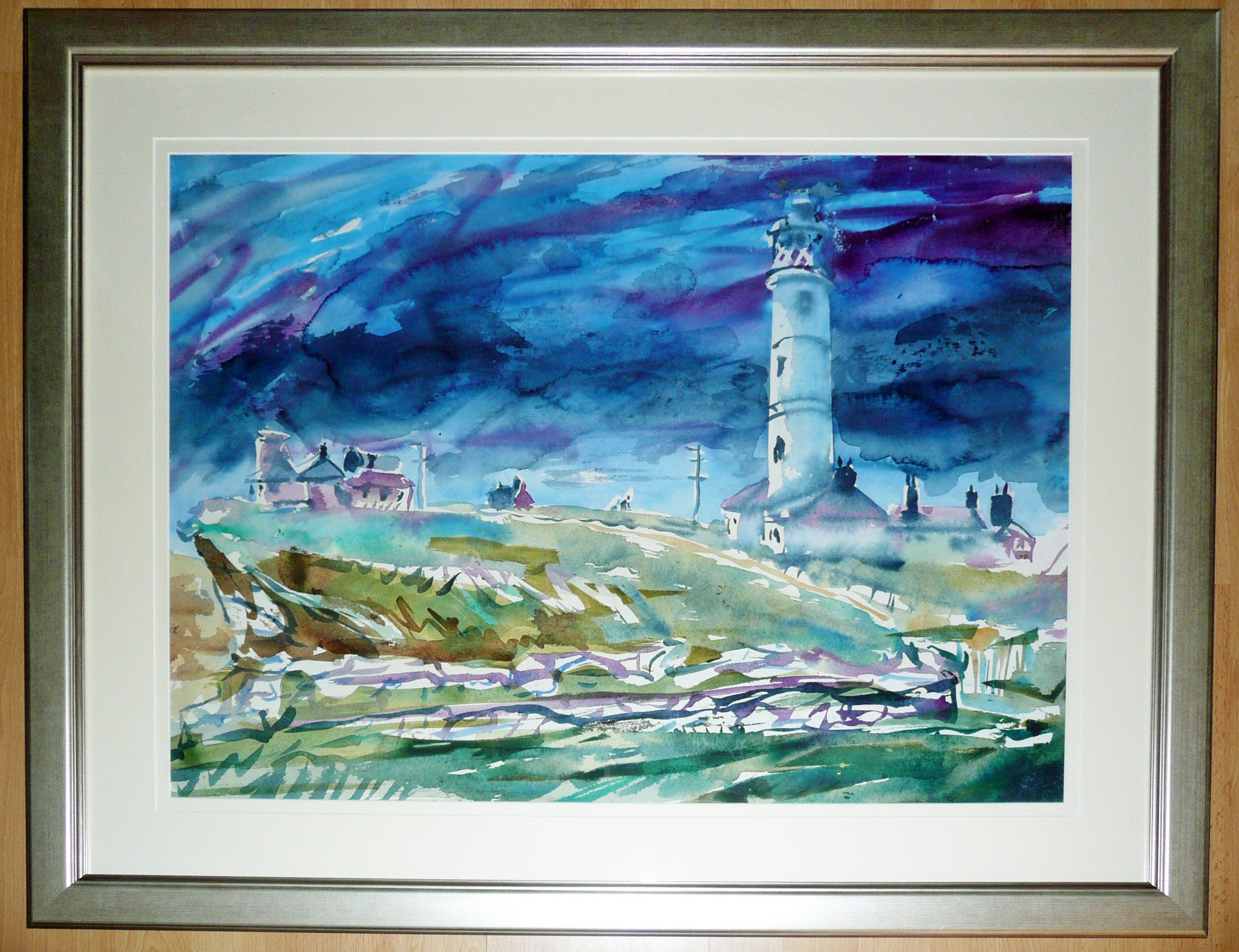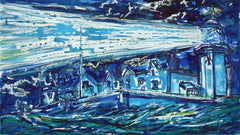ARTIST BIOGRAPHY
David Smith (1920-1999)
Born in Lowestoft, Suffolk, in 1920 to a fishing family. He would accompany his father aboard his drifter, The Kipper, for several days at a time, and never lost the voyager urge. During wartime service in the RAF, he was commissioned to sketch on bomber raids over Germany. These and other wartime images toured the country as an exhibition in aid of SSAFA (Soldiers', Sailors' and Airmen's Families Association) which showed in many cities, finishing at the Cooling Galleries in London, where it was opened by Sir Douglas Bader.
He studied at The Slade School of Art after the war, with commissions coming his way as a result of the RAF exhibitions. He went on to a distinguished career as an art teacher himself, which included 14 years at the Chelsea School of Art, from where he retired as a senior lecturer in 1979, and a swan-song as a much-revered teacher of etching at the Camden Arts Centre (he had been elected to the Royal Society of Painter-Etchers and Engravers in 1951).
He took up the position of Official Artist on board the British Antarctic Survey's annual relief voyage in 1975. The Survey invited him back for a much longer (seven-and-a-half- months) voyage on his retirement from Chelsea. The extensive series of oil paintings which resulted from these voyages was exhibited at the Commonwealth Institute and illustrated Gordon Elliott Fogg's book The Explorations of Antarctica (1990), to which the Duke of Edinburgh contributed a foreword.
Impressed by his work in Antarctica, the officers of Trinity House approached him with the mammoth task of recording the lighthouses of England and Wales. This was in the early 1980s, at a time when the remaining active stations were going automatic and being superseded by light vessels and other new technology. Smith's images of the British coastline were as different from the Antarctica work as are the respective topographies. He firmly believed that the style of a work should be determined by the atmosphere the work attempts to capture. He was conscious of the eclecticism of his oeuvre, and revelled in it, saying that he "ploughed a zig-zag furrow". A number of these lighthouse works were published in 1985 in the book “View from the Sea”, with text by Richard Woodman, Commander of Trinity House, and a forward contributed again by the Duke of Edinburgh.
He held exhibitions at many prestigious venues in Japan, and undertook commissions there. In 1993 the San'in Chuo Shinpo newspaper published 23 of his impressions of the Shimane Prefecture in its Sunday edition over a six-month period. The full-colour images were accompanied by poetic descriptions written by his eldest daughter, Caroline Kano, a professor of English and Chinese at the Prefectural Women's College, Matsue (Smith was married to the singer and teacher Elizabeth Hawes). These works, and Caroline Kano's texts, were collected in book form in 1996 as Journey to the San'in.



